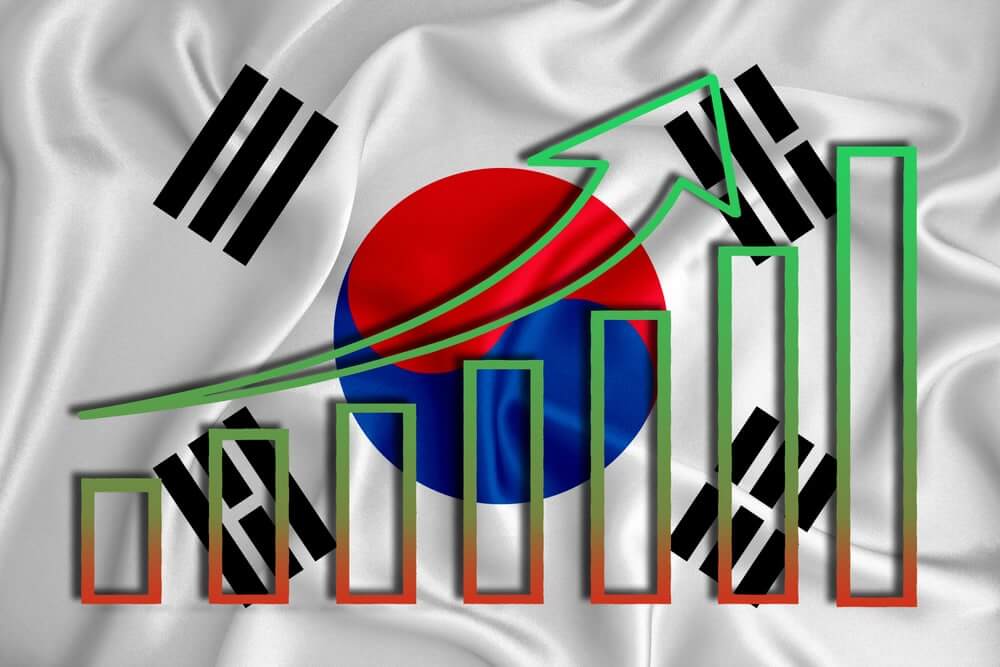
Diverse Sectoral Growth Bolsters South Korea’s Economy
Quick Look:
- South Korea’s economy grew by 1.3% in Q1 2023, surpassing forecasts.
- Significant sectoral growth in technology, construction, and manufacturing.
- Cautious monetary policy likely due to robust economic performance.
South Korea’s economy has exhibited a remarkable acceleration in growth, surpassing even the most optimistic forecasts for the last quarter. This development has significant implications for the country’s monetary policy and provides a timely boost to President Yoon Suk Yeol following recent political challenges.
In a recent announcement, the Bank of Korea revealed that the South Korean economy expanded by 1.3% in the first quarter of 2023 compared to the previous quarter. This performance significantly outstripped the consensus forecast of 0.6% growth, with the highest estimates previously capping potential growth at 0.9%. Year-on-year, the economy grew by an impressive 3.4%, well ahead of the anticipated 2.5%. Such robust growth is particularly noteworthy as it dims the prospects for an imminent interest rate cut, which many had speculated might be necessary to support the economy.
This acceleration is attributed to several factors. One key factor is a global surge in demand for technology products, particularly semiconductors, which are a cornerstone of South Korea’s export-led economy. Additionally, there has been an uptick in overall exports, which grew by 8.3% in the first quarter, up from 5.7% in the previous quarter. Furthermore, this growth was supported by governmental measures announced in February. These measures aimed at bolstering infrastructure projects and public-private partnerships, especially in industries previously hampered by credit risks.
South Korea’s Construction Sector Grows by 4.8%
The broadening momentum of South Korea’s economic growth is evident across various sectors. The resurgence in construction investment highlights the effective implementation of supportive governmental policies. This sector saw growth return in the first quarter, following a contraction of 4.5% in the previous period. Moreover, a significant 4.8% growth in the industry further evidences the revival of the construction sector. Public works and building construction drive this growth.
Manufacturing output also saw an increase, with a rise of 1.2% from the previous quarter. The production of chemical products and transportation equipment was particularly strong, underpinning the broader recovery in the manufacturing sector. Such sectoral recoveries are critical as they indicate a more diversified growth base, reducing the over-reliance on technology exports that has characterised the South Korean economy in past years.
Implications for Monetary Policy and Economic Outlook
The unexpected strength of South Korea’s economic recovery gives the central bank substantial reasons to be cautious about interest rate cuts. This growth is primarily driven by exports and improving domestic spending. Consequently, the robust growth suggests that the economy can sustain higher interest rates. This is particularly relevant as the South Korean won has weakened against the dollar.
Economists like Kwon Young Sun of Woori Finance Research Institute note that these developments give the central bank a “fresh incentive to take some time before conducting any interest-rate cuts.” This approach plays a crucial role in keeping inflationary pressures in check while supporting sustained economic growth.
South Korea’s faster-than-expected economic growth relieves some pressure on monetary policymakers. Additionally, it provides a beacon of stability and optimism for President Yoon’s administration as it navigates political and economic challenges. As the country continues to harness global market opportunities and reinforce domestic economic structures, the outlook for the remainder of the year remains positive. Consequently, economists and market observers are adjusting growth projections upwards.


